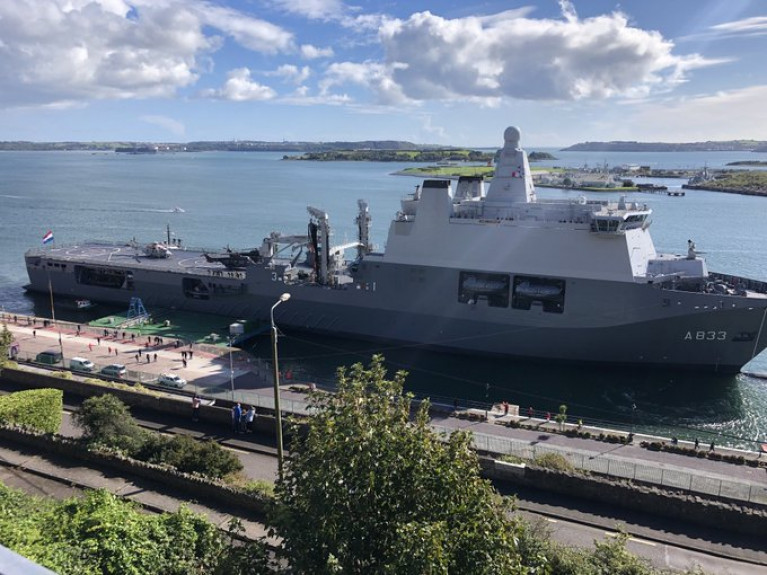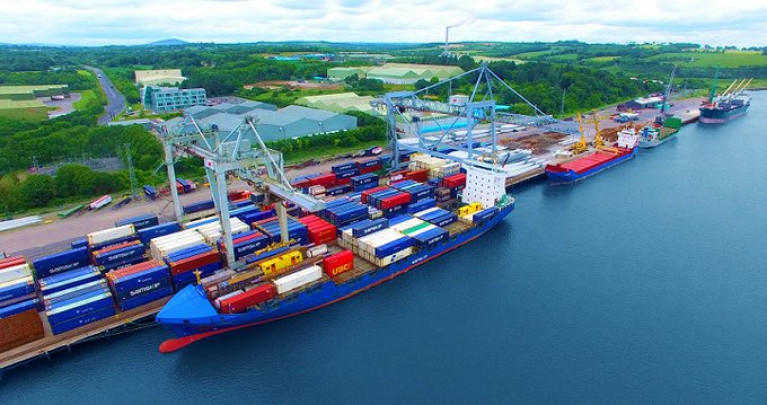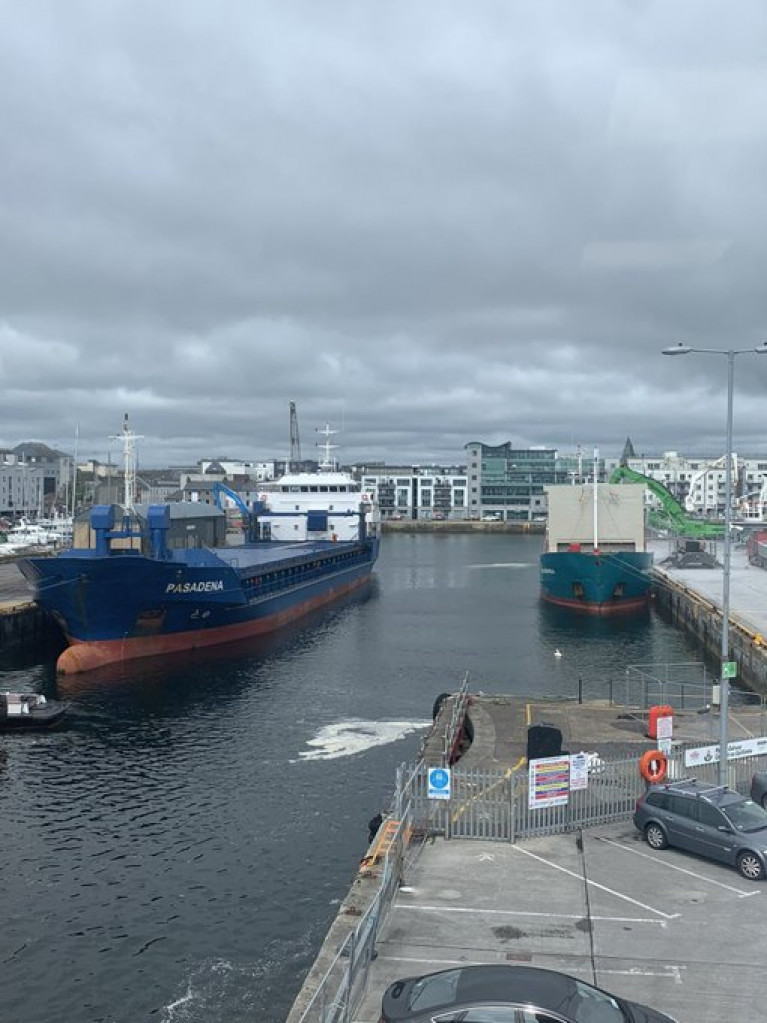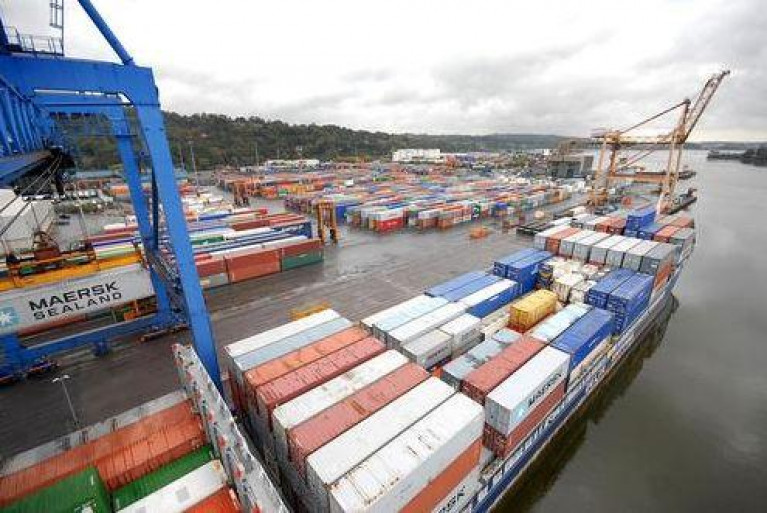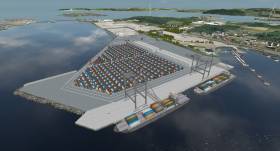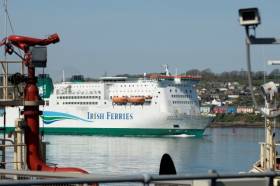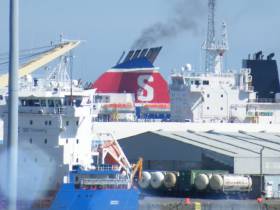Displaying items by tag: Irish ports
A Fine Gael MEP has called for EU investment in Irish ports to support development of renewable energy.
Midlands-North-West MEP Colm Markey warned that Ireland cannot achieve energy security, and consumers will continue to face unpredictable energy costs unless there’s a significant scale-up in renewable energy production.
The MEP is hosting a conference, entitled “Europe’s Energy Future: Ireland’s Opportunity,” in Dundalk Institute of Technology, this Friday (February 2nd).
“We can discuss ambitious renewable energy targets day in day out, but nobody seems to be addressing the elephant in the room,”Markey said.
“When it comes to the rollout of offshore wind development in particular, there are too many bottlenecks with no plan to address them. Our ambition is not matched with delivery, and a major re-think is needed,” he said.
“Ports such as Drogheda, Bremore, Galway and others across the country will have a vital role to play in facilitating the development of renewable energy by offering service hubs, turbine construction sites and green hydrogen production,” he said.
“It’s imperative that the EU and the Irish Government invest in Ireland’s port infrastructure,” he said, identifying this as one of five key areas requiring action.
He outlined the other four key areas as planning reform, including designation of “renewable acceleration areas” where planning consents can be expedited; expanded grid capacity’ investment in long-term skills and training; and addressing supply chain issues,including the need to “build-up local production” and ensure “abundant access to a range of raw materials.”
First Foreign Naval Ships Since Pandemic Begun Call to Irish Ports
Foreign naval ships have called to Irish Ports for the first time since the pandemic begun, writes Jehan Ashmore.
The Royal Netherlands Navy's largest ship HNMLS Karel Doorman, displacing 27,800 tonnes, arrived in Cork Harbour this afternoon to berth at Cobh, having sailed from Greenock, Scotland.
HNLMS Karel Doorman is a joint logistic support ship designed and built by Damen Schelde Naval Shipbuilding (DSNS) and was officially named and commissioned in March 2014. The 204m vessel can carry helicopters and can be used for multiple naval support missions.
Whereas the shorter 166m HNLMS Rotterdam arrived in Dublin Port yesterday afternoon and berthed at the North Wall Extension next to the Tom Clarke (East-Link) toll-bridge.
The leadship 'Rotterdam' class vessel is a Landing Platform Dock (LPD) amphibious warfare ship of 12,750 tonnes and was also built by DSNS and commissioned into service in 1998.
Prior to the arrival of HNLMS Rotterdam, Afloat observed in Dublin Bay the ship's landing craft in the vicinity of the vessel while offshore of Dun Laoghaire Harbour.
The landing craft are accommodated in the ship's aft dock and above the hull in the superstructure is equipped a large helicopter deck for related operations.
Larger Samskip Ship Added Along With Waterford Call to Recently Launched Ireland-Amsterdam Link
In response to growing demand, Samskip has introduced a larger, faster containership, for its recently launched weekly container service between Dublin and Amsterdam by adding a call to the Port of Waterford.
The expansion comes less than five months after the debut of Amsterdam as a service separate from Samskip’s Rotterdam-Ireland links.
“We have experienced strong uptake for the direct route into Amsterdam’s network of rail, road and barge connections to major EU markets,” said Thijs Goumans, Head of Ireland Trade, Samskip. “As anticipated, customers linking to Ireland have been eager to avoid the post-Brexit hassles of UK distribution. Waterford can expect the same seamless connections.”
Monday night departures from TMA Terminal Amsterdam for arrival in Dublin on Wednesday complement Samskip’s existing Rotterdam-Ireland shortsea services, said Goumans. For Irish exporters, the weekend return to Amsterdam has also proved a key attraction.
“Samskip rail links between TMA and Duisburg connect Irish importers and exporters to markets farther east,” he said. “Adding Waterford brings new opportunities for Irish exports in the northern Netherlands, Germany, Poland and beyond.”
The service upgrade sees the introduction of the 750TEU capacity container ship Edith, whose faster operating speed accommodates a call in Waterford after the Dublin Port without any schedule disruption.
Samskip’s Rotterdam-Ireland services are sustained separately by a pair of 800TEU vessels.
“We are delighted by this expansion of Samskip’s Ireland service,” said Alma Prins-Droog, Head of Cargo & Offshore, Port of Amsterdam. “Since its inauguration last January, TMA Logistics and Samskip have worked tirelessly to make this service a success. This development highlights the position of the port of Amsterdam as a short sea hub, offering shippers efficient and reliable connections between Ireland and the European hinterland. We will continue to work with our partners to ensure success. The Irish container market shows strong growth, and the addition of the port of Waterford offers many new opportunities.”
Michael van Toledo, General Manager, TMA Logistics added: “Every week there has been a faster uptake of vessel slots on this route, demonstrating that the Amsterdam-Ireland link is a response to demand that was already there.
“TMA’s congestion-free road access provides a platform for growth in FMCG volumes into Ireland and for Irish pharma and dairy exports via Amsterdam, with Samskip rail services offering connections to the east and cross-docking at TMA is winning over trailer operators to and from markets further south of Amsterdam. over the past three years.''
Port of Waterford Chief Executive Frank Ronan said that the latest service development is built on a strong relationship between carrier and port, after a decade of calls by Samskip’s Ireland-Rotterdam services to Belview Container Terminal.
“The addition of a shortsea connection to Amsterdam by one of our leading service partners demonstrates the growth opportunities that exist in both directions for direct links between Ireland and other EU markets,” said Ronan.
“As the premier unitised facility in the south-east of Ireland, Waterford has capacity to handle more frequent direct lo-lo services into continental Europe, whether driven by local exports or rail freight containers moving across country,” said Ronan.
In its first post-Brexit quarterly review of port volumes, the Irish Maritime Development Office (IMDO) offers an overview of maritime traffic on an all-island basis.
Commenting on key points in the report, Liam Lacey, Director of the IMDO said that there were significant and unprecedented changes in maritime traffic on the island of Ireland in the first three months of 2021. RoRo volumes in the Republic of Ireland declined by 13% compared to Q1 2020, while LoLo volumes rose by 11% for the same period.
RoRo volumes on ROI – GB routes fell significantly, by 31%, with a surge in ROI – EU traffic, which rose by 74%. NI – GB volumes rose by 7% in the RoRo sector in Q1. The result of these changes was that ROI – EU routes now hold an 18% share of all island RoRo volumes.
The factors driving the considerable swings in unitised trade in Q1 2021 are complex and the future makeup of the market is still highly uncertain. The most impactful factors included: the suppressive effects of severe COVID-19 restrictions on economic activity in Ireland, the UK and across Europe; a pre-Brexit stockpile of merchandise goods that drove declines on GB routes at the beginning of 2021; and concerns of disruption on the UK Landbridge which resulted in increases on ROI – EU direct services, in both the LoLo and RoRo markets. There was also a marked decline in the use of ROI ports by NI importers and exporters wishing to access markets in GB.
Passenger traffic experienced precipitous declines throughout 2020, which continued into Q1 2021, with volumes in Ireland down by 78% and volumes in NI down by 46% for the first three months. The passenger market has been more severely disrupted by the COVID-19 pandemic than any other sector of the shipping industry.
Mr Lacey cautioned that a final conclusion on the impact Brexit will have on the unitised freight and passenger markets cannot be reached on the basis of Q1 results alone. “The market is going through a phase of rebalancing, characterized by significant increases in capacity on some routes, significant reductions in both freight and passenger volumes, increased competition and considerable uncertainty. What is certain is that the shipping industry in Ireland is open, responsive, resilient and highly competitive. This is evidenced by the fact that there has been a twofold increase in capacity on direct EU services in the past 12 months, despite the effects of COVID-19 restrictions on economic activity throughout that time.”
“Ports, shipping companies and those working in the haulage, logistics and distribution sectors should be commended for continuing to provide essential services and maintain vital supply chains in the face of unprecedented challenges,” Lacey added.
The IMDO will continue to monitor these markets closely and will advise the Department of Transport and inform stakeholders with frequent reporting. The Q1 Unitised Traffic Report for 2021 is now available here.
Afloat previously featured the Port of Galway's shipping activity and likewise the company of the mid-west port highlighted on social media the variety of vessels along with respective cargoes that called to the harbour at the weekend.
A trio of cargoships were berthed in the Port of Galway's single berthing area, Dun Aengus Dock. Here the Hestia was engaged in refuse-derived fuel (RDF), Mia Sophie-B with limestone while the Pasadena had a load of scrap metal.
The aptly named Corrib Fisher, operated by Jas Fisher Everard arrived with petroleum (from Whitegate Refinery, Cork Harbour). The final ship in port over the weekend was RV Celtic Explorer, the research vessel of the Marine Institute berthed at its registered homeport.
This afternoon the port is occupied by the continued presence of Celtic Explorer, the port's pilot cutter and a variety of leisure craft. At the port's outer pier is the Aran Islands serving freighter, Saoise na Mara which was acquired as secondhand tonnage last year.
The former Norwegian flagged palletised cargo ship Fagerfjord was renamed when introduced by Lasta Mara Teoranta last year. The operator has a government contract to run a subsidised service to the Aran Islands. This vessel can also load vehicles with deck-mounted cranes.
Exports from Ireland in February saw a sharp fall, according to data from the Central Statistics Office (CSO), although it appears that this was a result of a downturn in sales of chemicals and pharmaceuticals rather than the coronavirus.
Those sales account for nearly half of all exports.
Seasonally adjusted exports fell by €2.2bn or 16pc €11.6bn, the CSO said yesterday.
Irish exports to China - which make up a tiny proportion of the overall number - actually rose from a year ago. €1.7bn in January and February of this year compared to €1.15bn in the same period of 2019 were destined for the Asian marketplace.
For more Independent reports of a decline in exports from Dublin Port also click here.
A doubling in the size of the customs building the Irish Examiner reports is planned by the Port of Cork at its Ringaskiddy terminal due to the increasing likelihood of a hard Brexit.
“We have to plan for the worst now at this stage,” said Port of Cork chief executive Brendan Keating.
Already, a large number of HGVs from the North use ferry connections from Cork to get to Brittany in France and Santander in Spain. If a hard Brexit occurs, it is likely that increased HGV traffic will use the routes out of Cork.
The Port of Cork is investing €85m in developing expanded cargo-handling facilities at its deepwater terminal Ringaskiddy. It has successfully applied to Bord Pleanála to increase the size of a previously permitted customs’ inspection building at Ringaskiddy from 324sq m to 648sq m, primarily in light of the uncertainty over Brexit.
“We have to have the capability to put the necessary checks in place,” Mr Keating said, adding that, if a hard Brexit occurs, there is likely to be more demand for freight and cargo to transit via Dublin and Rosslare ports as well.
The newspaper has more here
Project to Unlock Potential of Irish and Welsh Ports
An Irish and Welsh project is seeking to unlock the cultural potential of the Irish ports of Dublin and Rosslare, and the Welsh ports of Holyhead, Fishguard and Pembroke Dock.
The research according to the NewRossStandard, will explore the cultures, traditions and histories of these ports, so that their cultural heritages can become a driver of economic growth.
The four-year project titled 'Ports, Pasts and Present: Cultural Crossings between Ireland and Wales' is a joint initiative with University College Cork (UCC) and Wexford County Council in Ireland, and in Wales with Aberystwyth University and the Centre for Advanced Welsh and Celtic Studies at the University of Wales,Trinity Saint David.
The project is part funded by the European Regional Development Fund through the Ireland Wales Cooperation programme and is led by UCC.
The Welsh Minister for International Relations, Eluned Morgan said he was pleased to announce the exciting new project which aimes to help turn five Welsh and Irish ports into vibtant tourist destinations in their own right.
For comments from the Welsh Minister and more click here.
Almost €8 million, The Irish Times reports, has been spent by the State buying land and developing properties at Dublin Port, Dublin airport and Rosslare Europort for border checks post-Brexit.
Paschal Donohoe the Minister for Public Expenditure and Reform said the Office of Public Works (OPW) has spent €7.8 million to date on acquiring and developing physical infrastructure for use at the two ports and the airport.
The Minister revealed the spending on infrastructure for a no-deal Brexit in response to a parliamentary question tabled by Fianna Fáil’s finance spokesman Michael McGrath.
The State has taken control of a 13,000sq m warehouse at Dublin Port previously owned by businessman Harry Crosbie, and purchased 16 acres outside Rosslare port that was owned by car dealer Bill Cullen.
Both men lost control of the properties in the financial crash. Mr Donohoe did not provide a breakdown of the State’s spending on the individual properties.
The State fast-tracked the takeover of the former Crosbie warehouse and the Rosslare property for inspections of goods and containers should the UK leave the EU without a deal on March 31st. The Brexit date has since been extended until October 31st.
To continue reading more on Control Post click here.
First of Two Festive Cruises Underway from UK to Irish Ports
#CruiseLiners - Classic cruiseship Marco Polo arrived to the Irish capital today as part of a Dublin Festive Mini-Cruise which includes an overnight call, writes Jehan Ashmore.
Cruise & Maritime Voyages (CMV) are the only operators serving Irish ports with this first of two separate festive themed cruises providing sightseeing and gift shopping opportunities. On completion of this three-night cruise which is to return to Avonmouth, (Port of Bristol) on Wednesday, passengers are to disembark in the port on the Severn Estuary.
Marco Polo dating to 1965, with capacity for 800 passengers which is small by today's standards, however given its classic former Soviet era liner heritage, this partially lends to an intimate atmosphere on board, noting interior lounge areas. In addition, there's plenty of open deck space featuring the classic horseshoe shaped aft decks and notably those forward, affording convenient views when visiting destinations, albeit given this time of the year, it would be the more hardy type to venture outside!
Also this Wednesday, another round of cruise-goers for the second cruise, marketed as the Festive Ireland Party Cruise commences with an afternoon departure. This cruise, again of three-night duration is to call to Cork (Cobh) Harbour on Thursday, where likewise of the Dublin cruise, an overnight will be spent on this occasion in the scenic Munster harbour town.
By overnighting in Cobh, this will enable those to also take in the tourist attractions of Cork City, given Marco Polo does not depart until Friday afternoon. An overnight passage follows across the Celtic Sea with a scheduled arrival back once more in Avonmouth, with an arrival on Saturday at around dawn.


























